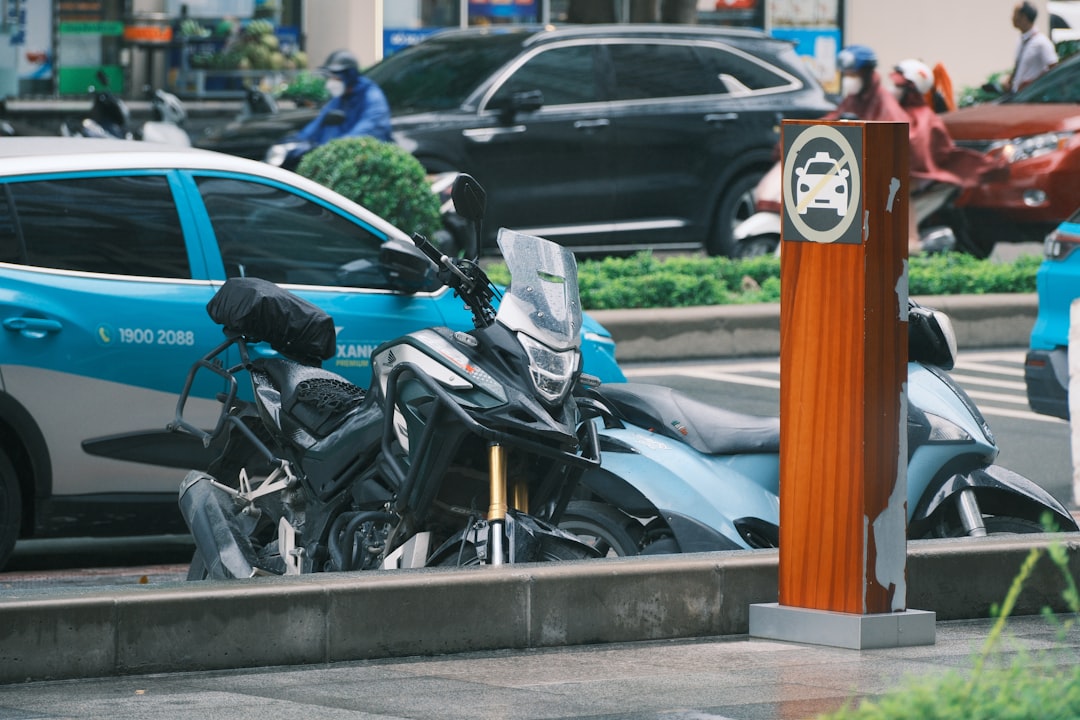

Engage prospects with a scan and streamline customer engagement with FREE QR code marketing tools by Sona – no strings attached!
Create a Free QR CodeFree consultation

No commitment

Engage prospects with a scan and streamline customer engagement with FREE QR code marketing tools by Sona – no strings attached!
Create a Free QR CodeFree consultation

No commitment
In today's digitally driven marketplace, accident insurance providers face persistent challenges in standing out, educating consumers, and converting leads amid a landscape saturated with choices and complex information. Traditional approaches like printed brochures or static paper forms often create friction, making it difficult for potential customers to access accurate accident insurance quotes, learn about coverage options, or initiate the claims process efficiently. These issues intensify when high-value prospects research independently, leave no trace in the CRM, and result in missed opportunities for engagement.
QR codes in marketing have emerged as a practical bridge that enables instant, guided action from any physical touchpoint. No app downloads or lengthy steps are required. Accident insurance providers can use QR codes to present in-depth policy details, encourage immediate quote requests, and educate on accident insurance and claims. At the same time, QR scans capture granular data that informs smarter segmentation, retargeting, and personalized follow-up.
As the customer acquisition process shifts from analog to digital, integrating QR codes across offline materials enables providers to meet rising expectations, streamline lead capture, and foster transparency. Every interaction becomes measurable and actionable. QR code adoption is transforming lead generation and customer education in the accident insurance sector by connecting physical interest to digital results and by closing attribution gaps that waste time and budget. For inspiration, see insurance QR ideas.

For accident insurance providers, consistent hurdles such as missed high-value leads who never fill out a form and a lack of visibility into anonymous interest directly impact pipeline quality and revenue. Paper-heavy workflows slow people down, make data inaccurate, and prevent teams from understanding who is ready to act. QR codes address these pain points by seamlessly connecting physical outreach with digital data capture and on-demand education that explains benefits in clear, mobile-friendly formats.
Replacing analog processes is the starting point. Printed quote forms, generic brochures, and manual sign-up sheets often lead to incomplete information and low follow-through. By placing QR codes on the same materials, providers can route prospects to tailored landing pages, interactive coverage calculators, and short video explainers that answer essential questions quickly. As customers scan and interact, marketing and operations teams gain the visibility needed to refine messaging, improve conversion flow, and prioritize the highest-intent leads.
With content kept current behind dynamic QR codes, compliance risks from outdated information are minimized, and messaging remains relevant everywhere your brand appears. That stability frees teams to focus on education, timely follow-up, and clear pathways to quotes, claims, and renewals.

Accident insurance providers often face offline-to-online disconnects. People see your brochures, desk displays, and billboards, yet they do not take the next step because typing URLs or making calls introduces friction. Anonymous foot traffic in offices and event booths rarely becomes measurable demand. Staff spend too much time explaining the same complex coverage details with little proof that the education is working.
QR codes remove these bottlenecks by guiding high-intent prospects directly to the next best action. They do not require app downloads, they work with any smartphone camera, and they take seconds to use. Most importantly, they make offline touchpoints measurable and adjustable.
In a category where delays cost deals, QR codes turn passive attention into measurable progress. Whether for quotes, education, or claims, teams gain the data and speed needed to prioritize human outreach where it matters most.

The biggest challenge in accident insurance is keeping information accurate and relevant as rates, coverage options, and regulations evolve. Static printouts can be outdated within weeks. QR codes solve this by letting marketers redirect to the right destination at the right time and by tailoring formats to specific tasks.
Here are the formats that work best in this vertical and why:
For accident insurance providers, forms and web links are the workhorses, since they support quotes, claims, and education at scale. vCards accelerate personal contact, and SMS or email links reduce friction for urgent assistance. Dynamic codes should be the default for any campaign that needs agility or tracking.

Growth hides in the places where intent appears but is not captured. Many providers have strong offline presence through agents, partnerships, and mailers, yet they struggle to connect those interactions to digital actions. QR codes make these moments measurable and actionable so you can prove what works and invest where returns are highest. Explore sector tactics in Sona QR insurance.
Start by mapping your physical touchpoints. For each location or asset, define the desired next step, the ideal landing page, and the data you want to collect. Then implement dynamic QR codes with clear CTAs and test placements for visibility and ease of scanning.
By deploying QR codes strategically across these channels, providers regain visibility into interest that would otherwise remain untracked. The result is a cleaner funnel with better attribution and higher conversion from offline touchpoints.
Accident insurance success relies on timely education, efficient claims, and rapid quotes. The risk of losing leads grows when interest signals go untracked. QR codes enable direct, measurable transitions from physical engagement to digital outcomes.
The following use cases address core pain points and deliver measurable gains:
These integrated touchpoints reduce dependency on manual follow-ups, capture more qualified demand early, and feed segmentation for future campaigns. Over time, they create a measurable loop of education, action, and optimization.
Each scan tells a story. It captures where the interest originated, what a person wanted to do, and how ready they might be to take the next step. Accident insurance providers can convert this intent into segmented audiences for targeted follow-up across email, SMS, and paid media.
Start by aligning QR codes to funnel stages. Use one set for education and awareness, another for comparison and consideration, and a third for quotes and claims. Connect your QR platform to your CRM so each scan creates or updates a contact with the correct tags, then route audiences to the right nurture tracks.
By building audiences from real-world behavior rather than assumptions, providers increase relevance, reduce churn, and surface upsell opportunities when interest is highest.
A multi-channel strategy only works when each touchpoint connects to the next step and when data flows into a single source of truth. Offline actions, anonymous website visits, and event engagement often fail to reach the CRM, creating blind spots. QR codes solve this by making every channel measurable and by guiding people to conversion-ready destinations.
Consider where your audience interacts with your brand. Then assign a code, a CTA, and a destination that fits the context. Use dynamic QR codes to keep content fresh and to standardize attribution across channels.
QR codes serve as the offline onramp to your digital engine. With a centralized platform like Sona QR, you can manage codes across teams, monitor performance in real time, and sync scan data to your CRM and ad platforms so every campaign compounds.
Every successful QR initiative starts with clarity. Define the business problem, the audience, and the outcome you want to drive, then choose the right code type, placement, and measurement plan. The following checklist helps accident insurance providers turn strategy into execution and consistently improve results.
Use this framework for quotes, claims, renewals, and education. Add your brand elements, ensure compliance alignment, and use dynamic codes for anything that might change during the campaign.
Start with a concrete goal and a specific physical touchpoint. Be precise about the action you want a scanner to take and the data you need to capture to move them forward. For example, capture untracked in-person leads at a community health fair or provide real-time claims intake at a repair shop where forms are often incomplete.
Choose the format that fits the task. Static codes are fine for perennial resources like a PDF safety guide. Dynamic codes are the default when you need tracking, flexibility, or segmented routing as campaigns evolve.
Make the code scannable, on-brand, and framed by a clear CTA. Then test it in the real environment to catch issues that desktop previews never reveal.
Roll out the codes where they will be seen by the right audience at the right time. Align placement with the journey and context so the action feels natural and valuable.
Measurement is the engine of improvement. Use a platform like Sona QR to monitor scan volume, source, time of day, device, and conversion outcomes. Iterate based on what the data shows.
End-to-end automation minimizes gaps, making all interactions visible and actionable. Over time, your QR program becomes a self-optimizing system that compounds results.
A common frustration for providers is the inability to tie physical interactions to revenue or meaningful engagement. Traditional analytics give impressions and clicks but do not capture which brochure, desk placard, or mailer generated a qualified quote request or a cleanly initiated claim.
Modern tracking changes the equation. With dynamic QR codes and a platform like Sona QR, you can log each scan with timestamp, context, and source, then connect that data to web behavior, call outcomes, and CRM progression. This enables true multi-touch attribution and faster prioritization of high-fit prospects.
With account-level data, teams can prioritize outreach to high-intent segments and prove the ROI of each physical asset. This turns QR codes into a cornerstone of your performance marketing and operations strategy.
Even the best QR code fails if it is hard to see, unclear in value, or disconnected from follow-up. Sustainable success comes from standardizing best practices across creative, placement, and automation, then training teams to reinforce the habit of scanning.
Focus your improvement efforts on the media and moments that matter most in accident insurance: agent interactions, claims situations, renewals, and community events. Align your tips to those environments so the experience feels intuitive.
By embedding these practices into campaigns and operations, providers improve scan rates, reduce friction, and make every interaction count.

Turning inspiration into execution is easier when you can point to results. Providers across the accident insurance space are using QR codes to capture high-intent leads, accelerate claims, and surface upsell opportunities. The common thread is speed to value: each scan provides immediate utility to the customer and creates a measurable signal for the provider.
Here are examples that illustrate the impact and offer ideas you can adapt. See Bitly’s inspiration gallery:
Creative applications work when they match the environment and deliver immediate value. Emulate these by pairing each QR with a clear benefit and by making the destination fast, mobile-first, and personalized.
Many QR campaigns underperform because the code is hard to find, the promise is vague, or the destination is outdated. Accident insurance introduces added complexity with compliance and sensitive claims workflows. You can avoid common issues by testing thoroughly, emphasizing clarity, and building operational readiness before launch.
Treat QR programs as living systems. Update content, test placements, and align teams to ensure scanners receive what they expect. Enforcement of simple standards drives significant gains in conversion and customer satisfaction.
When claimants and prospects can educate themselves and take action instantly, satisfaction rises along with conversion. Small design and process fixes compound into outsized ROI.
QR code technology is reshaping how accident insurance providers educate, capture, and serve their audiences. By turning every physical touchpoint into a measurable, actionable gateway, providers connect offline interest to digital experiences that guide prospects to quotes, claims, and renewals without friction.
Every scan delivers intent data into marketing and CRM workflows, enabling precise and timely engagement from inquiry through policy life cycle. Whether you aim to streamline quote requests, connect print and signage to digital journeys, or keep disclosures compliant in real time, QR codes close attribution gaps and automate follow-up. The result is faster decisions for customers and clearer ROI for teams.
With an integrated platform like Sona QR, you can generate dynamic codes, manage them centrally, and sync performance with systems like Salesforce and HubSpot. Sona.com augments this with identity resolution and multi-touch attribution so you can trace the impact from scan to revenue. Start creating QR codes for free at Sona QR.
QR codes have revolutionized accident insurance providers by transforming educational outreach into interactive, measurable experiences. They empower insurers to not only inform customers about coverage options and claims processes but also to enhance trust and engagement through instant access to critical information. Imagine giving clients the ability to scan a code and immediately understand their policy benefits, safety tips, or filing procedures—making education seamless and impactful.
With Sona QR, accident insurance providers can create dynamic, trackable QR codes that update campaigns instantly without costly reprints, while capturing valuable data on customer interactions. This means improved customer acquisition, stronger retention through personalized education, and clearer insights into what content truly resonates. Start for free with Sona QR today and turn every scan into a meaningful connection that drives customer confidence and loyalty.
The article does not specify particular providers but focuses on how accident insurance providers can improve customer education and lead generation using QR code technology.
Choosing an accident insurance provider involves understanding coverage options, comparing plans through interactive tools like QR-linked calculators, and selecting providers who streamline quotes and claims processes with digital solutions.
Coverage options vary and can include individual accident coverage, family plans, and supplemental accident options, with information accessible via QR codes linking to detailed policy guides and comparison tools.
Specific costs are not detailed in the article, but QR codes can direct prospects to updated rate pages and personalized quote engines for accurate pricing information.
Claims processes are streamlined by QR codes that link to guided claim intake forms, document checklists, and status updates, reducing errors and accelerating first contact with claims specialists.
QR codes provide instant access to mobile-friendly coverage explanations, video explainers, and FAQs, reducing friction and enabling timely, measurable education that supports informed decisions.
Effective formats include web links to quote engines, vCards for agent contacts, pre-filled forms for claims and quotes, SMS or email triggers for urgent support, and dynamic QR codes for real-time content updates.
Ideal placements include agent offices, repair shops, hospitals, policy paperwork, direct mail, billboards, event booths, and invoices to connect offline interest with digital actions.
Providers use dynamic QR platforms to capture scan data with timestamps, locations, and devices, linking this information to CRM systems for multi-touch attribution and revenue impact analysis.
Common pitfalls include unclear CTAs, hard-to-find codes, outdated destination content, lack of staff training, and failure to align QR codes with measurable business outcomes.
By segmenting scans by lifecycle stage, product interest, and context, and syncing data to CRM and ad platforms, providers can create targeted nurture campaigns and retargeting audiences.
Dynamic QR codes allow updates without reprinting, enable tracking and segmentation, maintain compliance with current content, and support A/B testing and attribution across campaigns.
Integrating QR codes connects offline touchpoints to digital destinations, makes every channel measurable, prevents data silos, and enables consistent follow-up across sales, claims, and marketing teams.
Steps include defining the goal and audience, choosing the appropriate QR code type, designing and testing the code, deploying across key channels, and tracking and optimizing performance continuously.
QR codes link claimants directly to digital claim intake forms with document upload and status updates, triggering proactive outreach and reducing processing time by about 30 percent.
Use Sona QR's trackable codes to improve customer acquisition and engagement today.
Create Your FREE Trackable QR Code in SecondsJoin results-focused teams combining Sona Platform automation with advanced Google Ads strategies to scale lead generation

Connect your existing CRM

Free Account Enrichment

No setup fees
No commitment required

Free consultation

Get a custom Google Ads roadmap for your business






Launch campaigns that generate qualified leads in 30 days or less.
